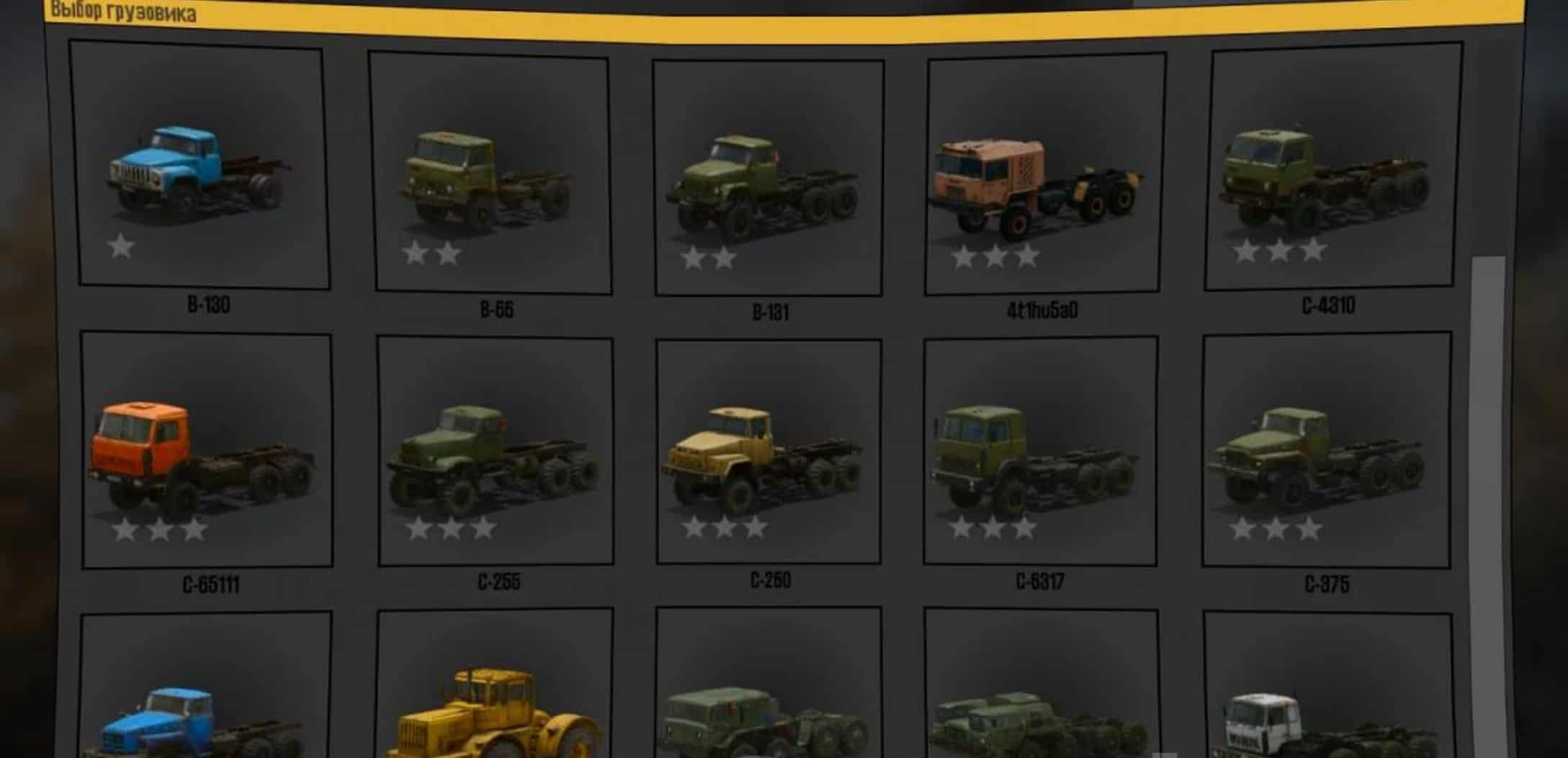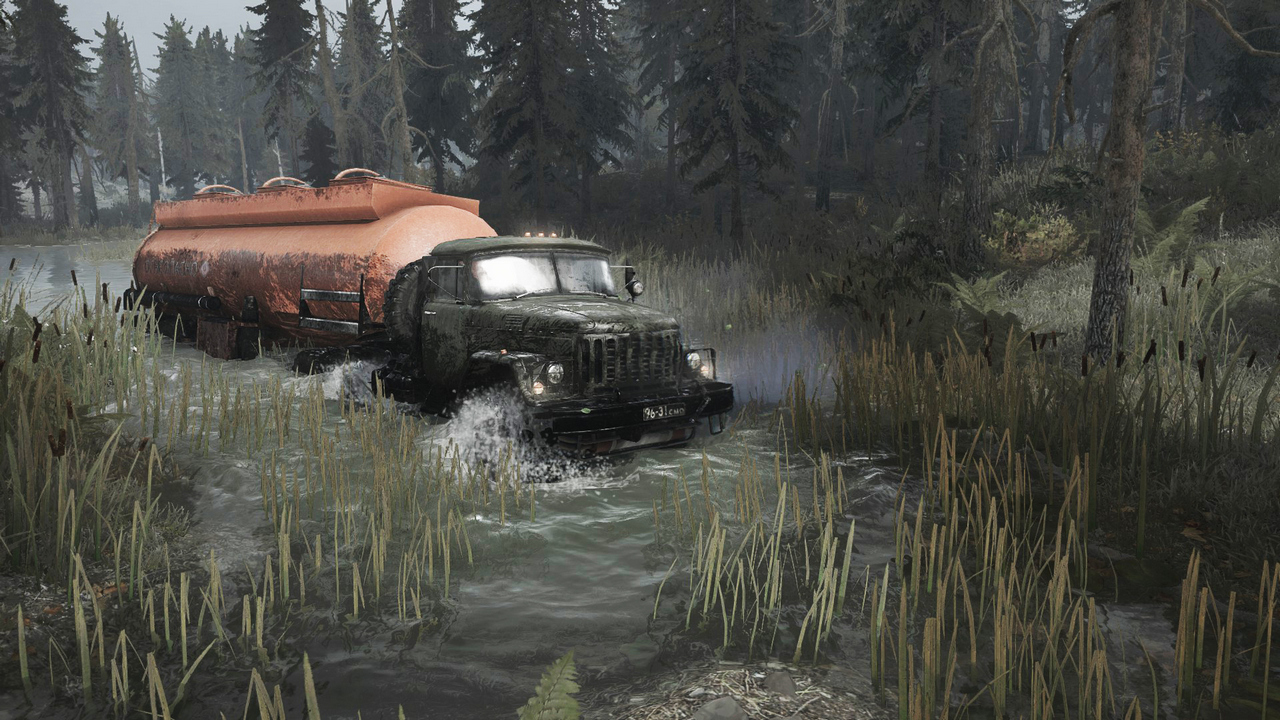

If you do find yourself stuck in the mud or in need of repair, you can switch to a different vehicle and come to your own aid. Whether by design or not, the vehicles have sluggish steering, require a deft hand to drive, and are all too easy to oversteer into danger. Unfortunately, control is the game’s main issue. Damage is a more obvious metric, but it doesn’t take much before you’re in trouble. There are always one or two stations at which you can top up your tank, but they might be out of your way, so you need to manage your fuel sensibly. In most of the trucks, you can enable drive to all wheels and differential lock to help you get through the worst roads and bodies of water, but doing so uses up significantly more fuel. You also need to be aware of fuel consumption and damage. Rivers have currents that can force you off course or tip you over if you’re not careful. Water displaces realistically and washes the mud from your wheels.

Deep tracks are carved in the muck as you push through, your tires clogging with earth and slipping in the increasingly poor conditions. Equally, the mud and water react dynamically to your vehicle as you drive. The trucks are slow, heavy things with a convincing weight and realistic suspension that reacts as you’d expect to the conditions at hand. One of them is the brilliant physics simulation at the heart of Mudrunner.


 0 kommentar(er)
0 kommentar(er)
